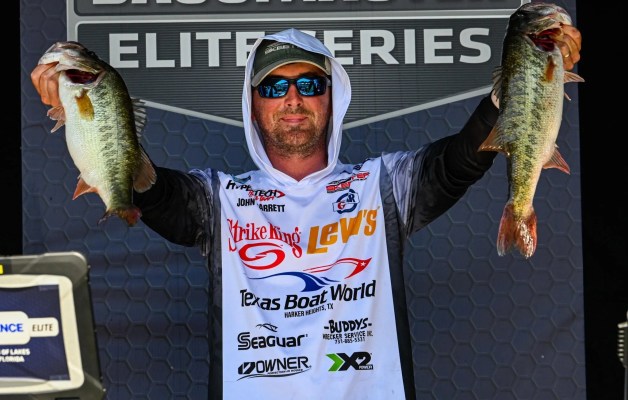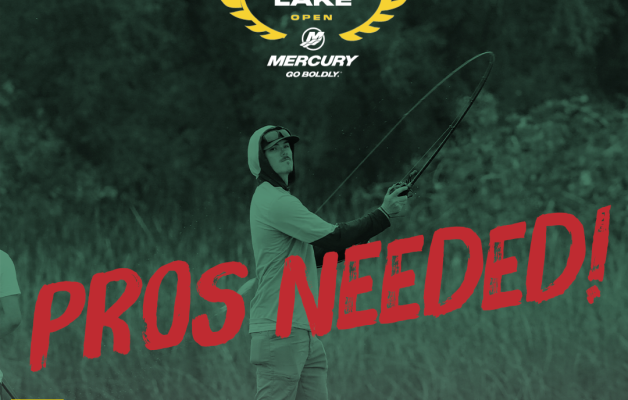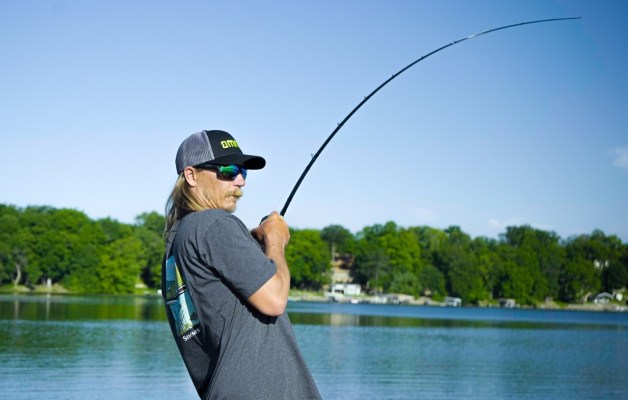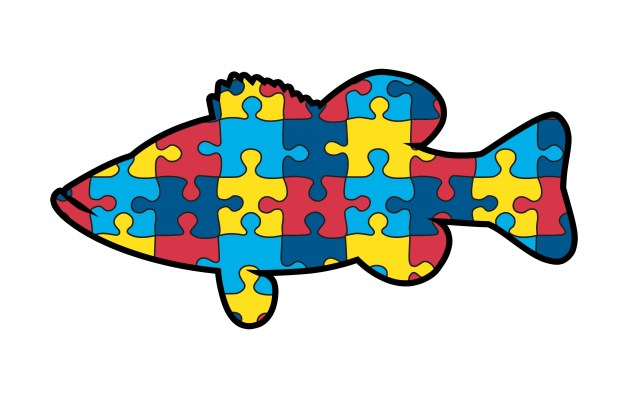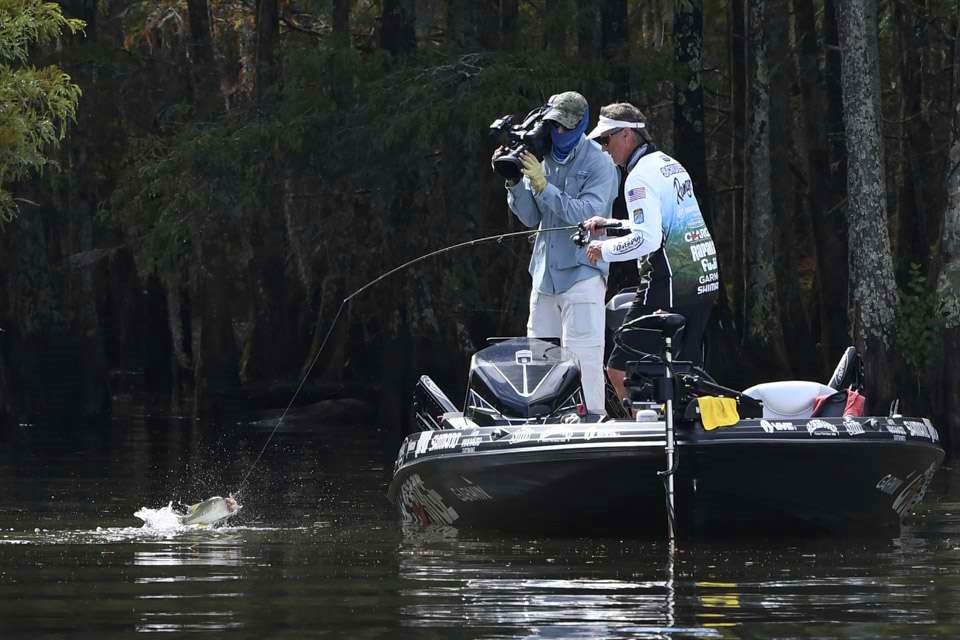
I’ve been fishing for bass and inshore saltwater species my entire life, and it’s amazing how many similarities there are between the two. Snook, redfish, even young tarpon share habits like those of the black bass … especially when cover or structure are in the mix.
They will relate to it just like a bass.
They may sulk in the shadows of an overhanging mangrove or pier, or use those places to stalk prey … just like a bass would a willow tree or floating dock. In fact, those are the very places I look if they’re part of the habitat I’m fishing in.
When cover is sparse and the baitfish are schooled up, they’ll chase them just like a bass. Then there are the rogues that are apart from the pack — often the biggest of their breed — just like a bass.
Fish are fish, especially predator fish, and I’ve learned things from saltwater species that have improved my odds at catching more bass and vice versa.
Hook, line and sphincter
For me, the tackle for bass and these inshore species is pretty much the same. I use the same rods, reels, line … even lures in many cases — including topwaters, flukes, jerkbaits and swimbaits. The only real difference is the size leader required.
In bass fishing, the leader is usually lighter than the main line. In saltwater, it’s heavier — sometimes a lot heavier — because tarpon and snook can wear through a leader in just a few headshakes. Sure, there are times when I’m outclassed with the tackle I choose, but that’s part of the challenge.
Chasing big snook and tarpon with a 7-foot-2 medium-heavy spinning rod spooled with 10- to 15-pound braid isn’t for the faint of heart. The odds are obviously in the fish’s favor, and I lose my share. In fact, the battle is oftentimes over before it starts. But on those occasions when everything goes right, and I’m able to boat those behemoths, the rewards are huge.
It’s the same for trophy bass. When you catch them on tackle lighter than the situation calls for, the rewards are amplified.
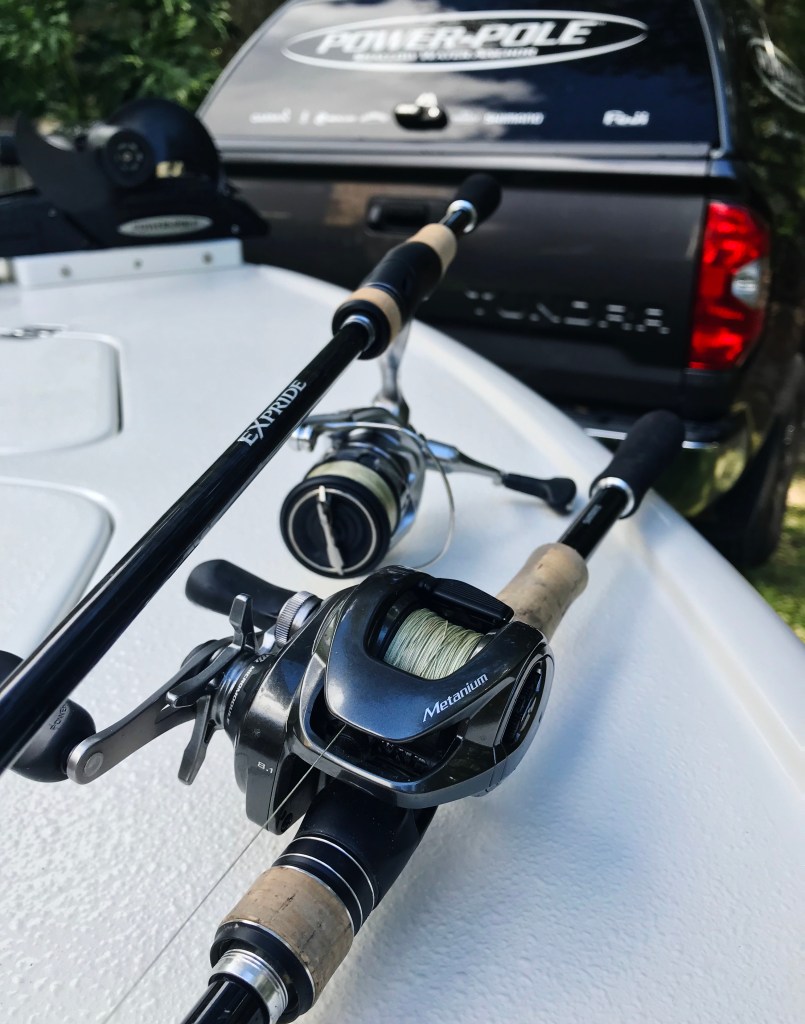
My primary setups for big bass and inshore saltwater species include medium to medium-heavy Shimano Expride spinning and casting rods constructed of high-carbon graphite in a series of cross wraps that deliver a crisp, responsive feel. Although extremely light, these specialized blanks are also super strong. Their length provides the accuracy and distance I need, plus the power and leverage to subdue fish much larger than these rods are intended for. I pair the spinning rods with either a Stradic 3000 or Stella 3000 reel. For baitcasting, I prefer the Metanium MGL III and Chronarch G models with higher gear ratios.
I spool my spinning outfits with 10- to 15-pound Power Pro SuperSlick braid, and my casting reels with 20- to 30-pound … unless I’m throwing a topwater, in which case I’ll use a buoyant mono or copolymer line. Leader size is dependent on the technique or the type of fish I’m targeting, and it can range from 6-pound for pressured, line-sensitive bass, to 60-pound fluoro for big snook or average-size tarpon.
Contrasting schools of thought
When driving the hook into a bass, most anglers like to set hard, burying the barb as deeply as possible. Others prefer to “pull” into the fish, letting a taught line and the fish’s movement drive the point home. In both cases, the rod is generally bent into a high arc.
In saltwater, it’s very different. Most of the advanced anglers and guides I know prefer a series of “jabs” when setting the hook. They stick the fish with a taught line, then follow with a series of quick pumps of the rod in an effort to continually drive the hook. And the rod tip is rarely in a high arc, at least until they feel the fish is stuck.
I’ve seen all of these different approaches work, but I’ve also seen them fail.
Another contrast is in how you play the fish once it’s hooked.
In battling large bass, the accepted approach is to keep the line tight and rely on the drag, even when they jump. In saltwater — particularly with snook and tarpon — the practice is to “bow” to fish when they jump, giving them line.
Bass fishermen fear this, believing a slack line will enable a thrashing fish to throw the hook. Saltwater anglers, on the other hand, believe giving the fish line during a jump prevents it. I’m caught between these two schools of thought. I’ve seen both work, and I’ve seen both fail. It seems to come down to the individual fish, how it’s hooked and the weight of the lure in its mouth.
Before any of this is considered, however, it starts by fooling the fish into biting whatever it is I’m throwing, then playing that fish with every ounce of power and finesse required to subdue it. Unless, of course, the fish is poorly hooked, then I try to “baby” them to the boat, giving them all the time they need.
Regardless of the species, the closer you play a big fish, the more you want the battle to be over with. We all do; it’s only natural. And the bigger the fish, the more frantic things can get. Sadly, that’s when so many trophy fish are lost — when the angler wants a fish so much, he or she makes a critical mistake. Then all is lost.
Whether it’s breaking the line or pulling the hook, bad things can happen when fish are on a short string … especially if they’re still green.
Something I learned years ago that has helped me countless times, is trying to “lay” the fish over when they try to jump. Most experienced anglers do this instinctively. As a fish rises toward the surface. The rod is lowered simultaneously. And if the fish does break the surface, the lean on the rod is increased in an effort to roll that fish back onto its side and beneath the surface. It doesn’t always work out, but most times it will.
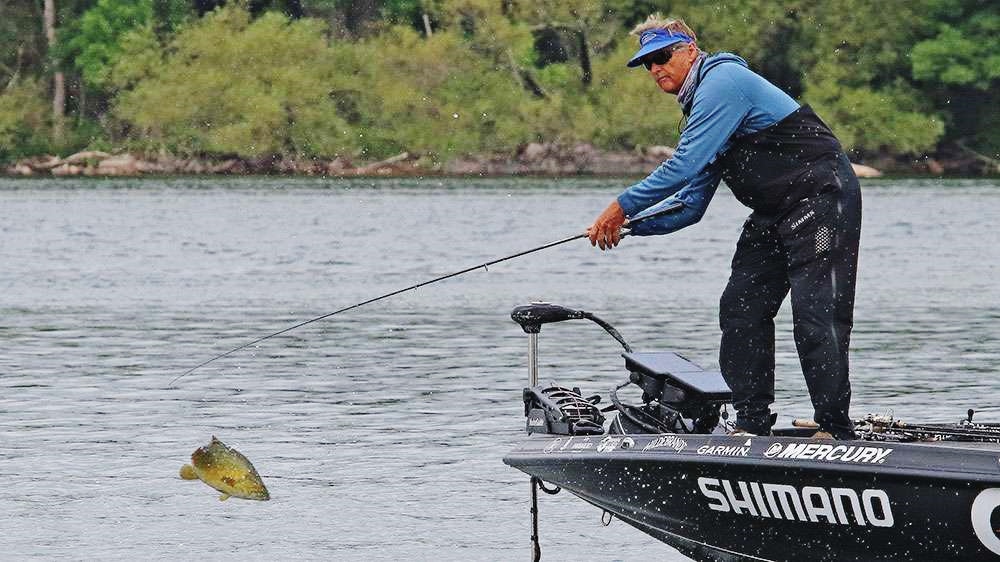
This speaks for any fish that jumps. The less time that fish is above the surface, the better. Sure, they tire themselves more quickly when they jump, and that will help shorten the battle. It’s fun to watch, too … provided there isn’t a lot of money at stake.
Regardless of the species of fish you’re after, start by balancing your tackle. Make sure the rod, reel, line, and leader are all matched to the situation, then play the fish you hook with patience and skill — giving them line when needed, taking it back when you can.
If done correctly, you will catch more fish and find greater rewards in battling big fish on light tackle.
Follow Bernie Schultz on Instagram, Facebook and through his website.


